“If the world were clear, art would not exist”. - Albert Camus
Through its lens on the world, art shows us a possible way towards the birth of a new Humanism.
Tang Contemporary Art is proud to present “A New Sense of Identity”, a group show where works by different artists dialogue like isolated identities united by the only demiurgic act of artistic creation. Identities are revealed in their creative act, as in the Cartesian assumption "Cogito ergo sum" - artists create and thus they exist through their art.
The slow but unstoppable process of modernity transformation forwards independent of us, and involves a paradigmal shift in the way of conceiving art - in the role of the artist and in general - of the fragmented collective consciousness. Artists’ individuality and self-awareness slowly re-emerge, prevailing over the collective dimension. And, when they still hint at the concept of collectiveness, they do it using the filter of a language that is uniquely intimate, deriving from their personal experiences. The collective dimension is recounted in a new way, filtered by the artist’s experiential heritage as a unique individual.
Thus, both Manuel Ocampo and Heri Dono, the two great masters on show even in different ways, report an individual dimension eventually studded with critical references to the world around them.
Manuel Ocampo's work blends secular religious sacred iconography and political narration. His works refer to the art history but also contain cartoon elements, as well as drawing inspiration from the punk subculture. His works contain many references such as symbols of Western colonialism treated through metaphors. He dialogues with art history political allegorists, including Leon Golub, Géricault, Goya, Daumier with allusions to contemporary figures including the political satire of Robert Crumb and the modernist painter Philip Guston. The darkness of Ocampo, evoking Gothic painting’s disturbing feeling, uses horror to give life to exquisite beauty and turn history into art history.
In a different way Heri Dono combines Indonesian folk art and myths with Western concepts of visual art. He incorporates the images of traditional Indonesian theater, current affairs, political relation, as a form of his mystical expression: an ensemble of local culture and contemporary life.
Through the art of the younger artists on show, we better face the natural evolution of our post-globalized world. Their works are more evidently indicative of the birth of the new individualism. Needless to say that there’s a close correlation between the two phenomena. The classical world, as it’s been taught us and as we have learned it and internalized, allows us to have roles in society, but frowns on individuals. And it’s just within the gap between our individual identity and our presumed role in the community, or ideal situation, that every programmatic action, constructive or destructive, becomes possible.
Translating this into the field of contemporary art: we witness a new center of gravity focused on the artist's own identity, which cannot be univocally defined. It is an individual but also a collective reality.
It can be regarded as the fruit of one’s wealth of experiences, whether they are corporeal, emotional, interpersonal, or as a collective feeling, a sense of belonging to a group. An idea inevitably realized thanks to the creation of borders and frontiers towards the “others”. Identity is built by comparing similarities and accentuating differences, defining the Self and the Other, belonging and extraneousness.
Magnificent and emblematic of the individual process the artist adopts to report his reality, Luis Lorenzana’s pictorial development has evolved dramatically. From his signature style, for years epitome of Filipino contemporary painting, influenced by a vibrant and rich Spanish Baroque contact, he recently evolved with new formal analysis. Looking back to his painting origins he indulges in graphic and obsessive repetitions of faces, stylized and multiplied through watercolor on paper. He is one of the first artists to carry out the natural passage from the naturalistic subject into a symbol, which most likely is a prelude to a further abstractionism and synthesis.
This new artistic era is generated from a fracture that is widening more and more. With the “New Humanism” we witness the return of painting, in an even more extreme way different from the one we already experienced in the cyclical recurrences of art history. The starting point is still the photographic image, the real data. But unlike the cliscé on the figurative, painting now bends to the necessity of story-telling, or better, of achieving a narration inserted in History. Color is no longer simply color, but becomes form, construction.
Niam Mawornkanong, with his representations suspended in a timeless dimension, brings us into his dreams, in a surreal and muffled world that exists only within himself. In its spaces - glacial and depersonalized non-places - random ghostly presences of almost ectoplasm ethereal animals, stare at us, and, while we think we are observing them, we actually feel intimately scrutinized, with such an attractive and magnetic sensation as to be irresistible but, at the same time, slightly disturbing.
A fantastic and illusory world is also invented by Oky Rey Montha, who, for years, has given life to characters of pop and cartoon memory, living heroic and captivating stories. The narrative which has remained constant over the years has evolved with a sublime pictorial touch, of great mastery, resulting in compositions that have started from cartoons coming to evoke baroque dimensions.
Deliberately playing with the ideas of disfigurement and vandalization through his thick oil layers and color tangles, Jigger Cruz reviles and destroys those familiar images painted on the background, making the destruction an integral part of his art aesthetic. Cruz’s assemblages of recognizable objects and dark forms, intertwining into each other, lead to a reflection on the very matter of painting. Encrypting linearity, his tangled colored vortexes decipher the paths of new mapping, unhinging the universally accepted culture's fixed points. Thrown into a dizzying displacement, oriented by new cardinal points, the observer loses any known landmarks and finally embraces new alternative ways of perception.
Art is coming back to life: we are allowed to look back to the rediscovery of our history, a collective story told through unique points of view, unrepeatable experiences, and the personal languages of each artist. This is an art that experiences a new freedom.
 Niam Mawornkanong The Last Tiger was not a Tiger Acrylic on canvas 130 x 150 cm 2009 | 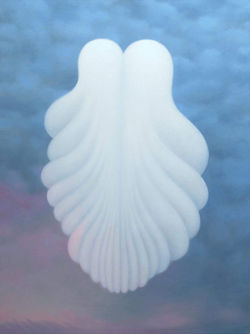 Niam Mawornkanong Heart Shape Acrylic on canvas 120 x 90cm 2012 |  Niam Mawornkanong Seed Acrylic on canvas 120 x 80 cm 2014 |
|---|---|---|
 Niam Mawornkanong Songs from far away Acrylic on canvas 180 x 300 cm 2022 | 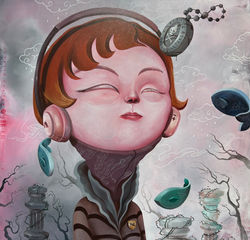 Oky Rey Montha Dark Mode Acrylic on canvas 120 x 120 cm 2022 | 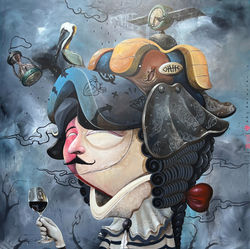 Oky Rey Montha Time for Wine Acrylic on canvas 120 x 120 cm 2022 |
 Luis Lorenzana 106 Heads 8-22 Watercolor on 300GSM Arches cold- pressed paper 114.5 x 155 cm 2022 |  Luis Lorenzana 101 Heads 8-22 Watercolor on 300GSM Arches cold- pressed paper 114.5 x 155 cm 2022 |  Luis Lorenzana 55 Heads 8-22 Watercolor on 300GSM Arches cold- pressed paper 114.5 x 84 cm 2022 |
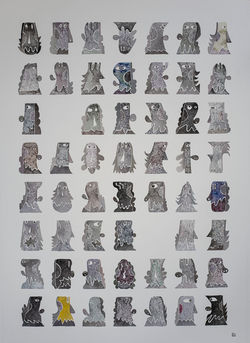 Luis Lorenzana 54 Heads 8-22 Watercolor on 300GSM Arches cold- pressed paper 114.5 x 84 cm 2022 | 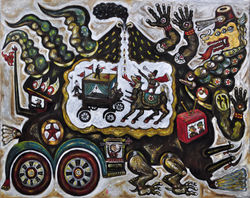 Heri Dono The Mountain Dragon acrylic on canvas 160 x 200 cm 2017 |  Heri Dono Super Trump-Land Acrylic on canvas 150 x 125 cm 2017 |
 Heri Dono MAJU Human Development Acrylic on canvas 125 x 150 cm 2019 | 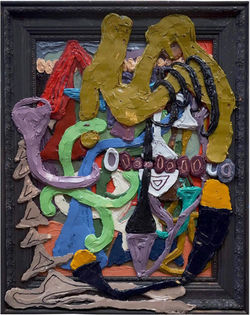 Jigger Cruz Hollow Ground Oil on canvas 78 x 63 cm 2022 | 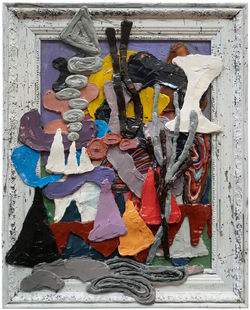 Jigger Cruz Sacred Stain Oil on canvas 78 x 63 cm 2022 |
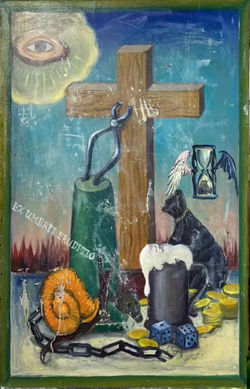 Manuel Ocampo Ex Umbris Eruditio Oil on canvas 92 x 61 cm 2022 | 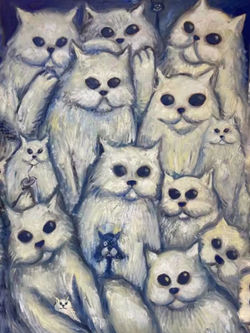 Manuel Ocampo The Neighborhood 2 (cats) Oil on canvas 137 x 107 cm 2022 | 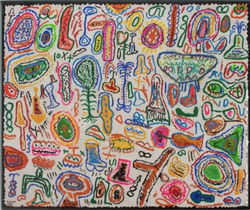 Yunizar Untitled Acrylic on canvas 200 × 240 cm 2022 |
Curator

Michela Sena
Born in 1976
Michela Sena is a Rome-Bangkok-based curator and art critic. Her research relates partly to the potential of global language and the relationship and dialogue between contemporary artists coming from different territories. After she graduated in museology and art history at Roma Tre University and got a Chinese language degree at SISU Shanghai Foreign Studies University, she was Director of Primo Marella Gallery Beijing and Director of Tang Contemporary Art Bangkok. She curated a wide number of shows proposing a punctual snapshot of contemporary art research, developing in recent years a focus on Chinese and southeast Asian art.



